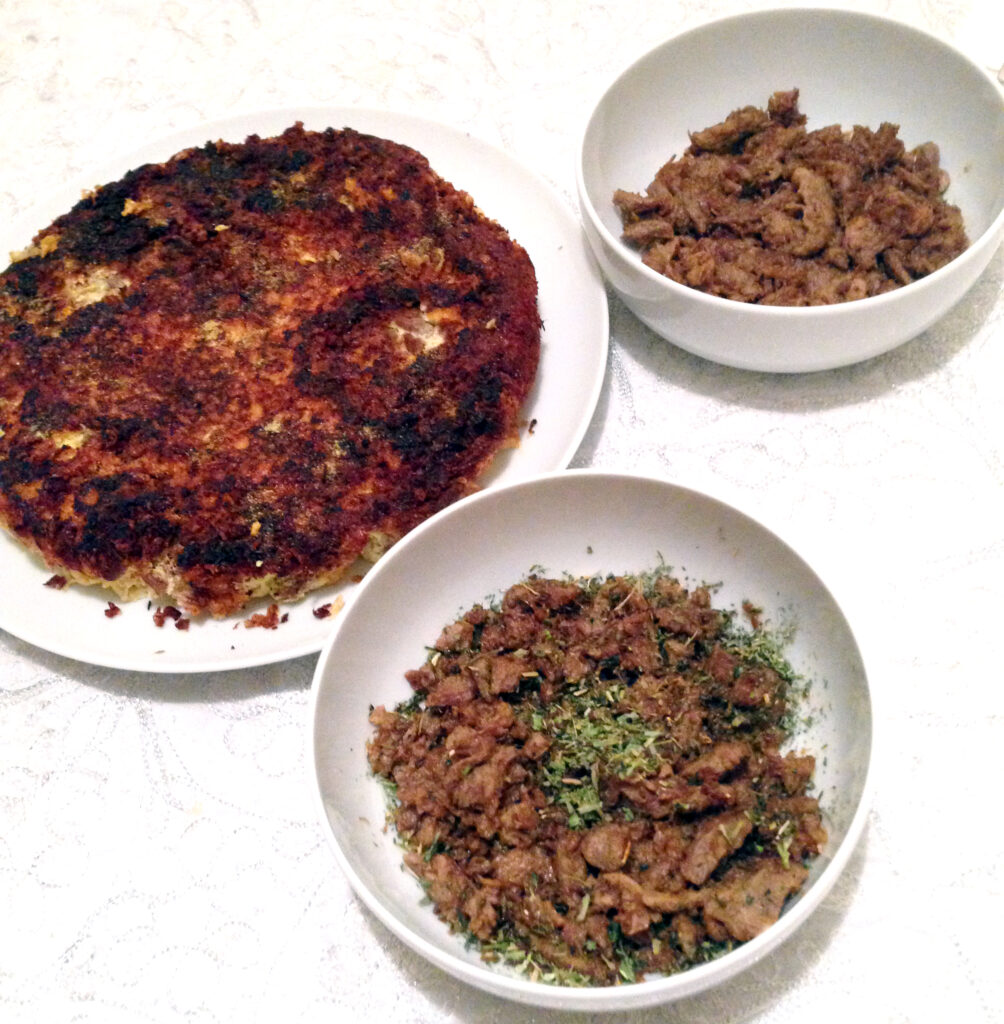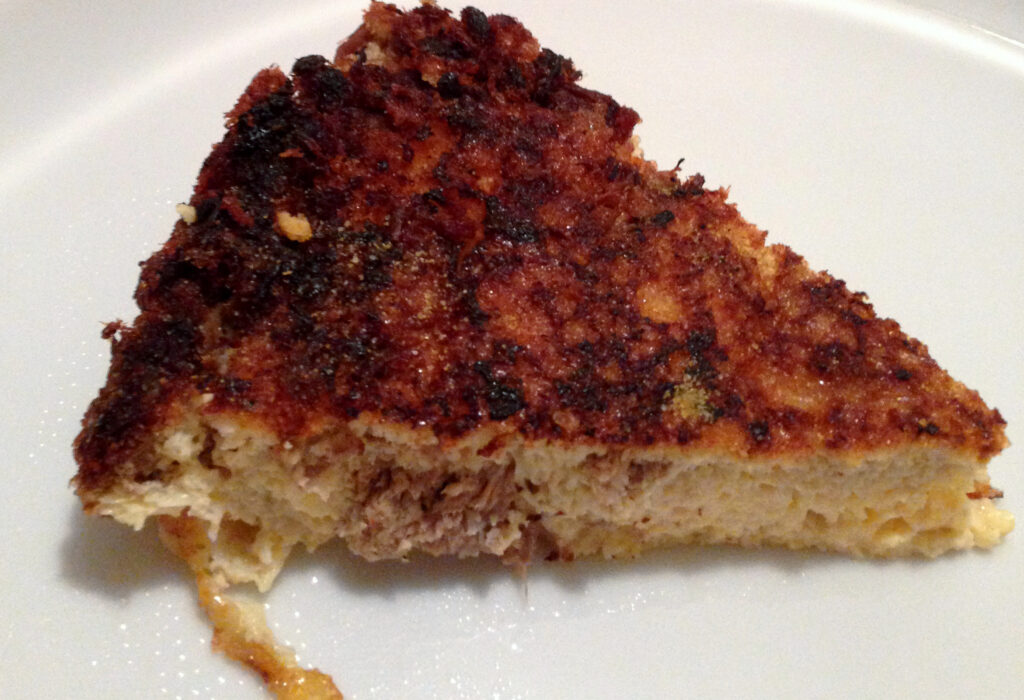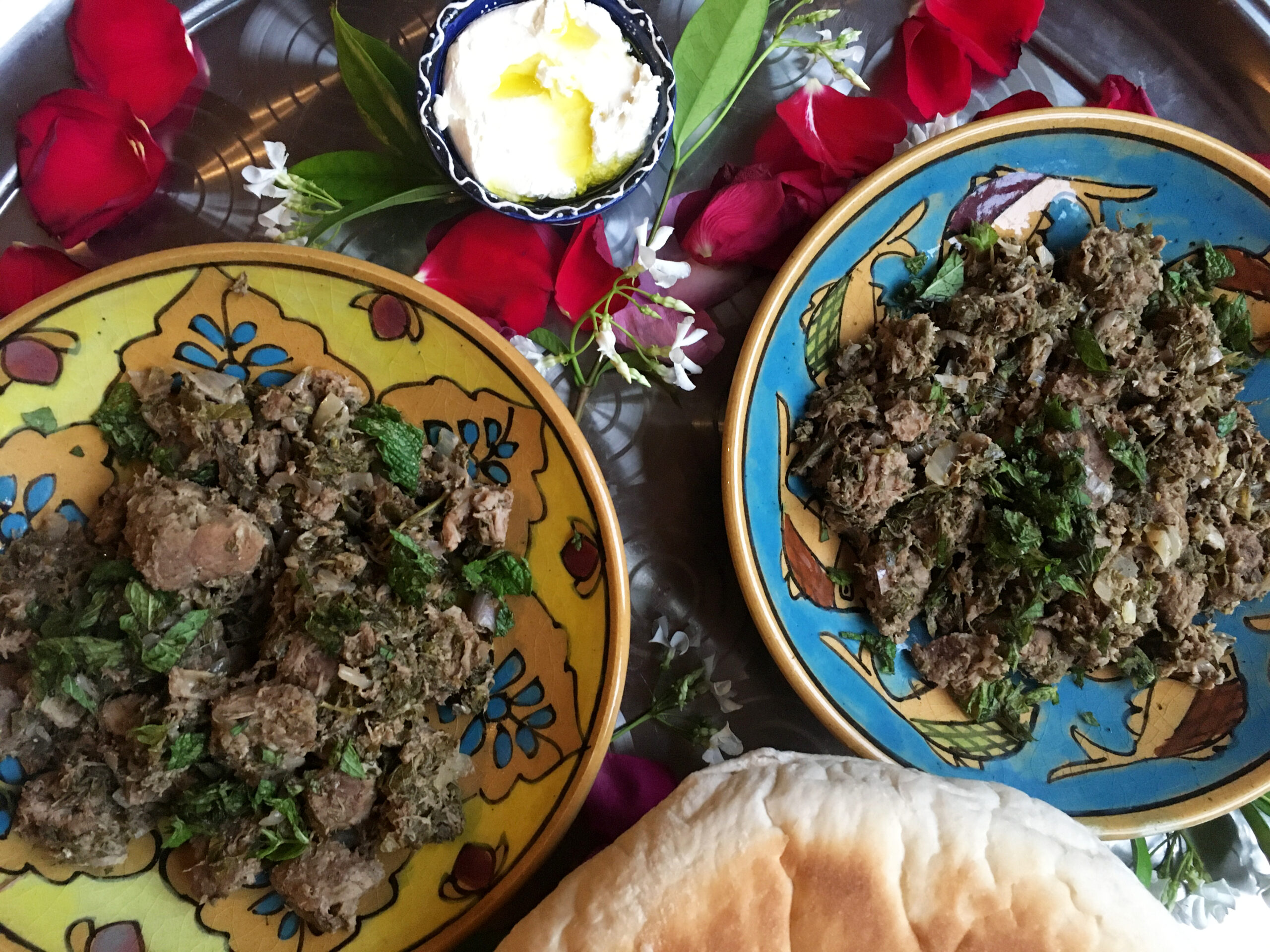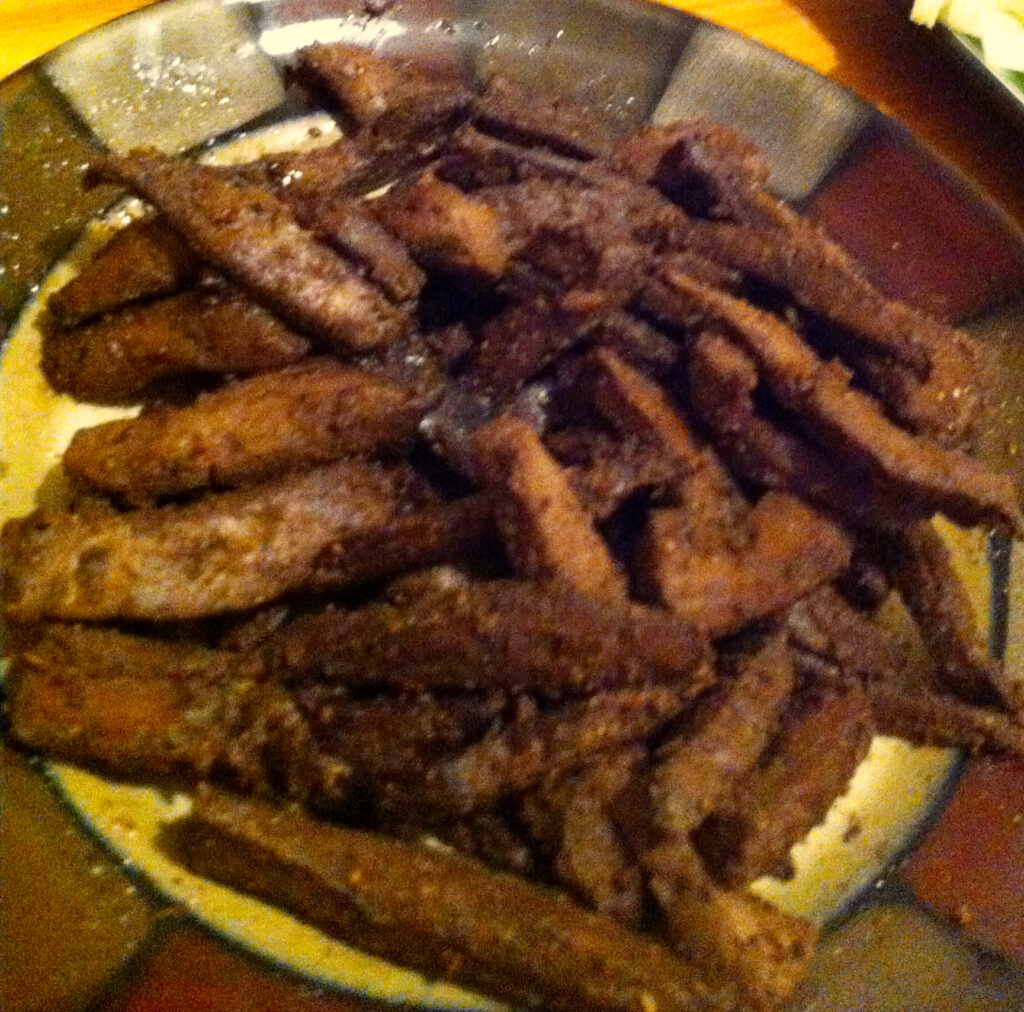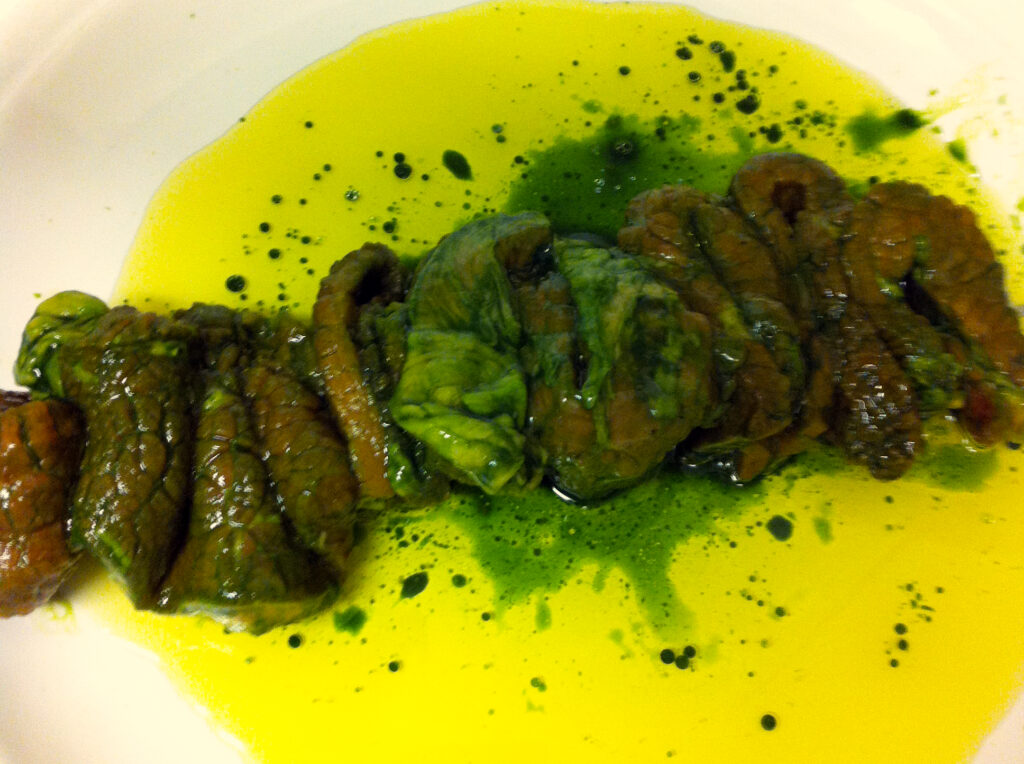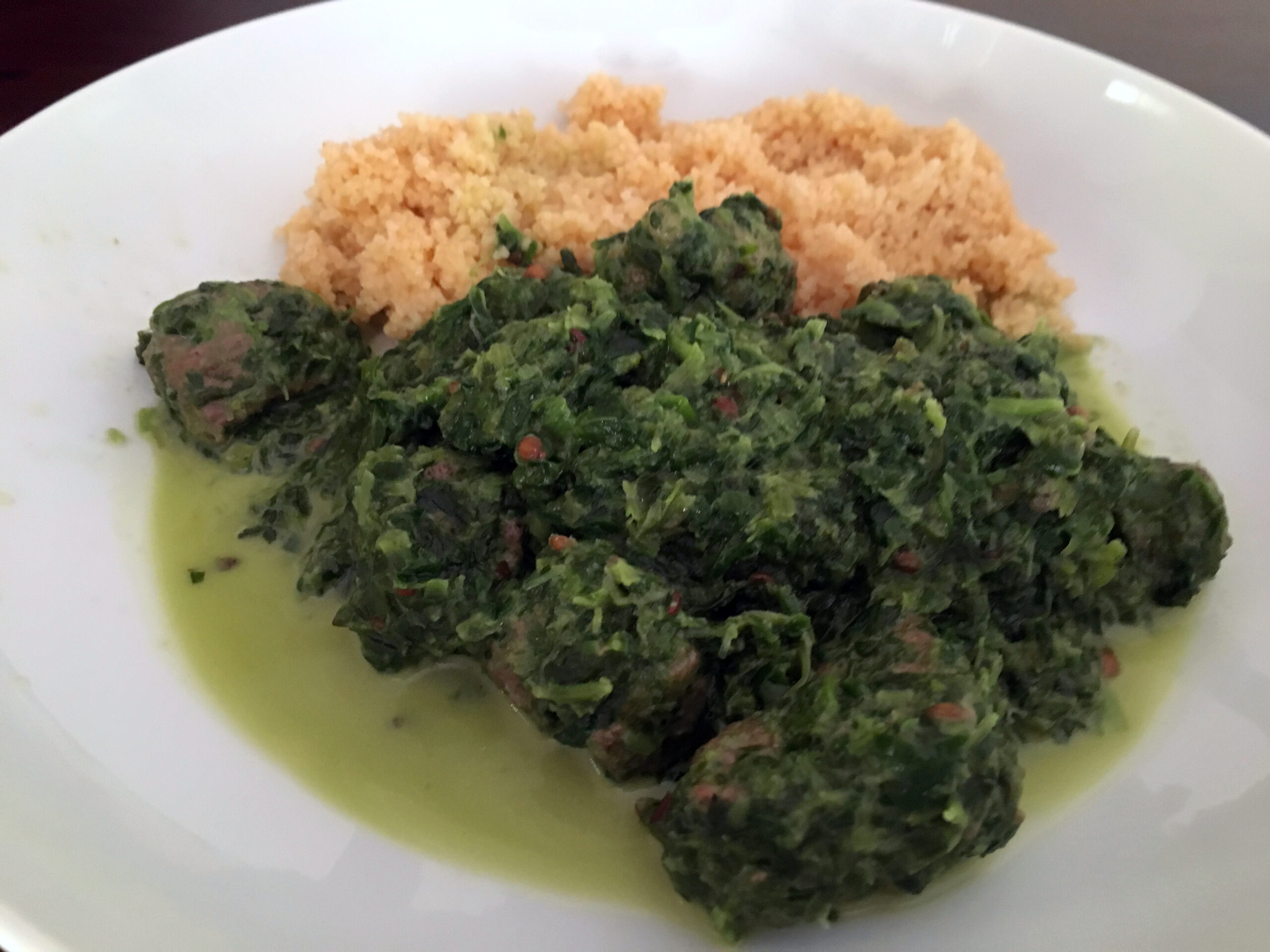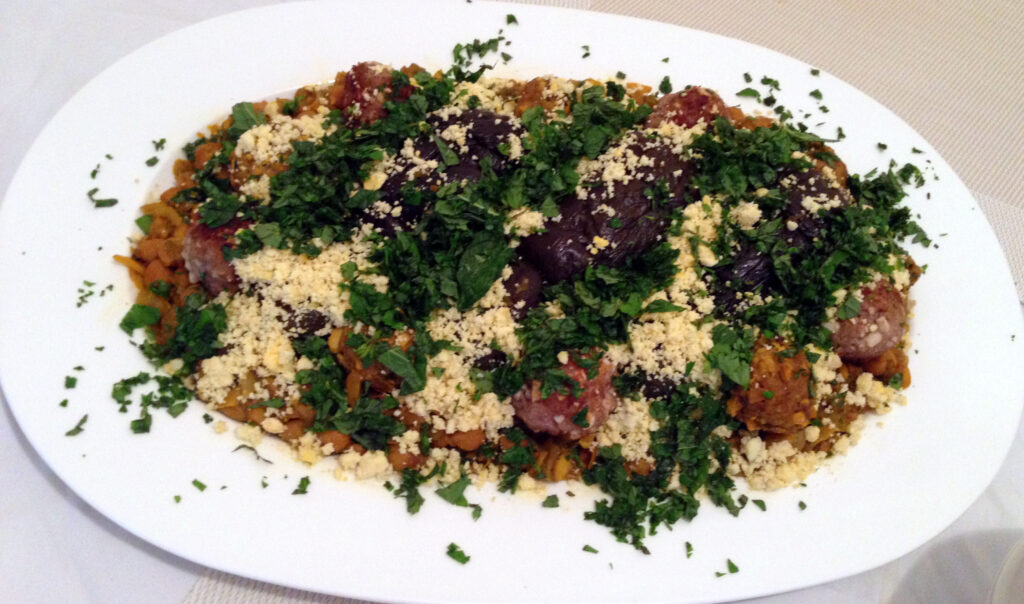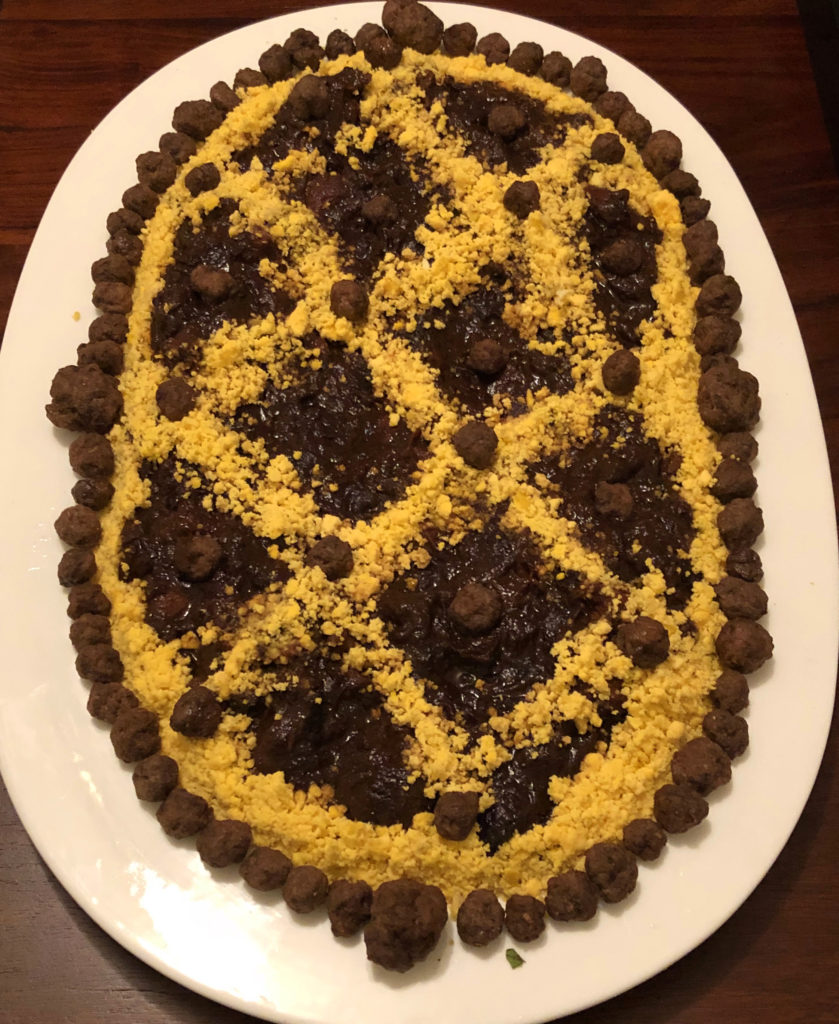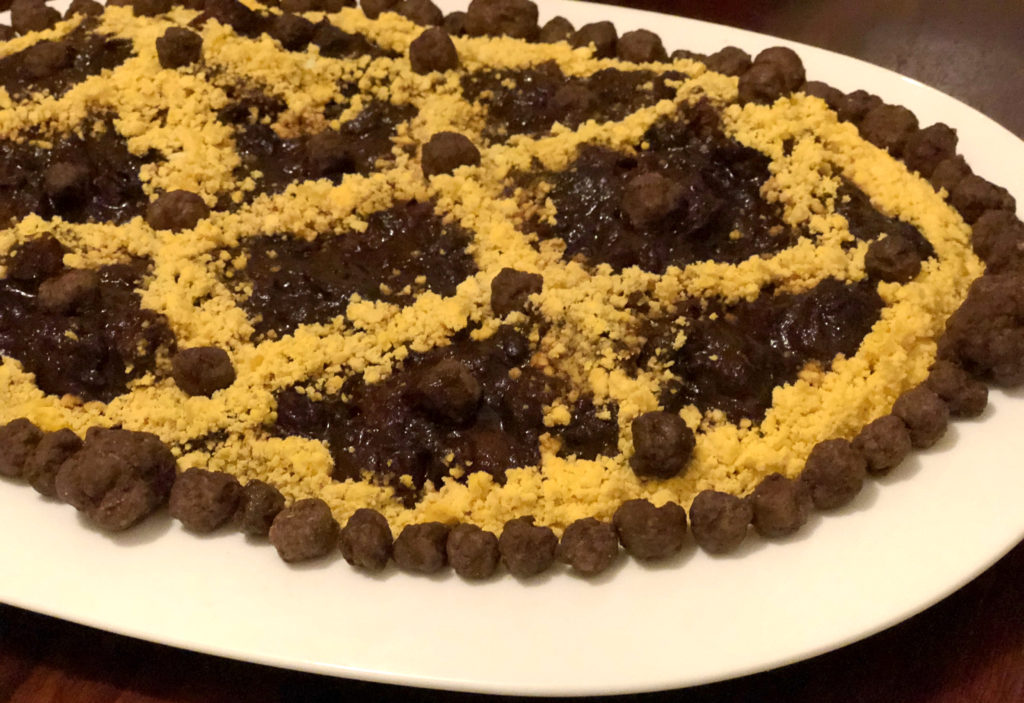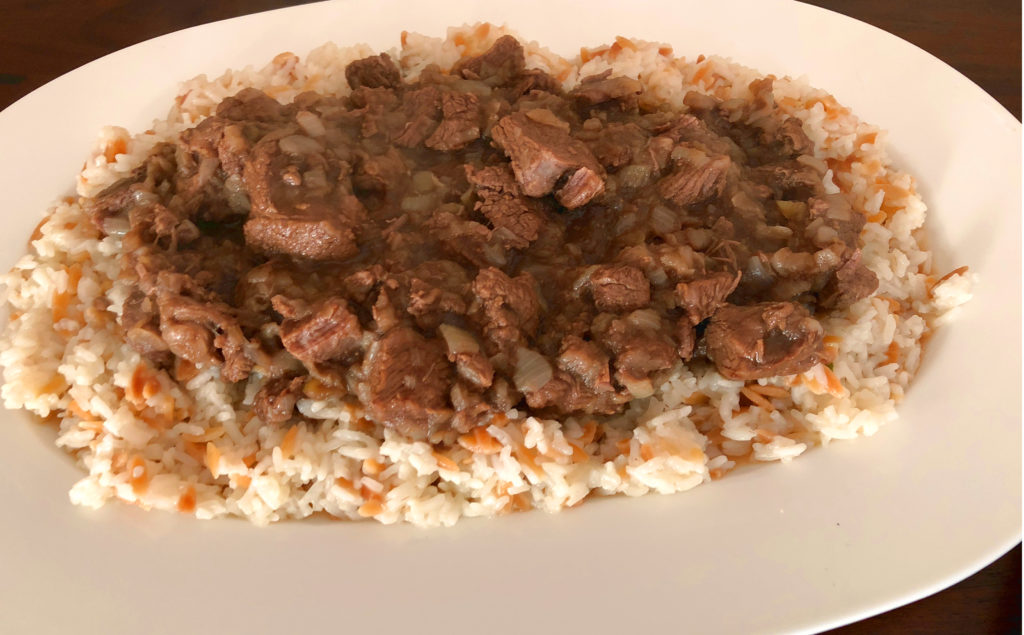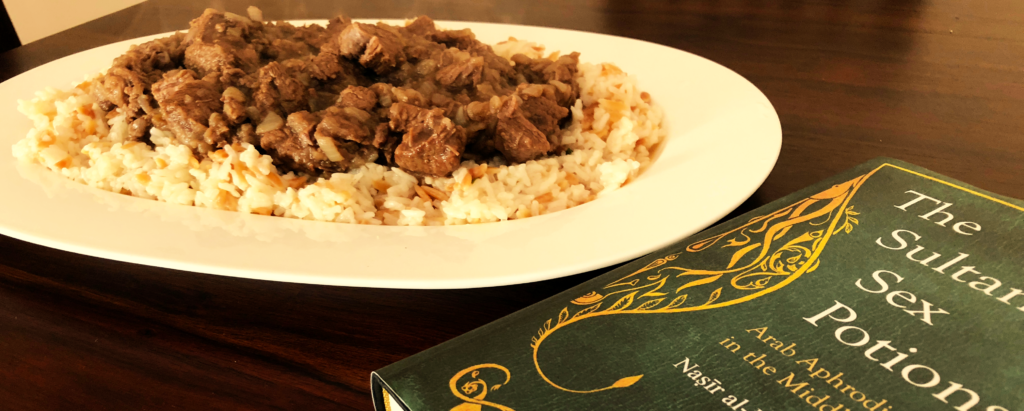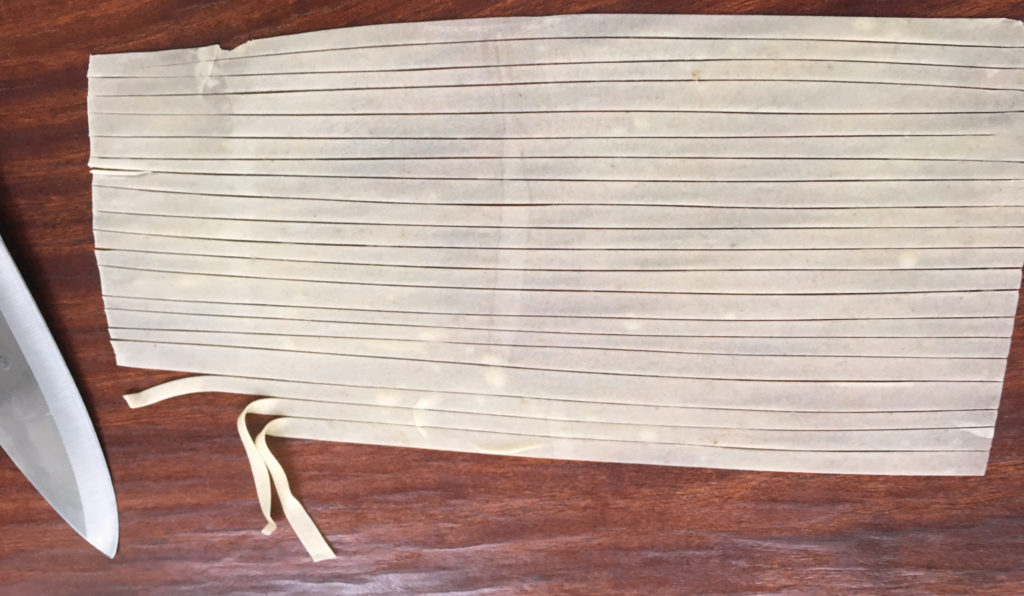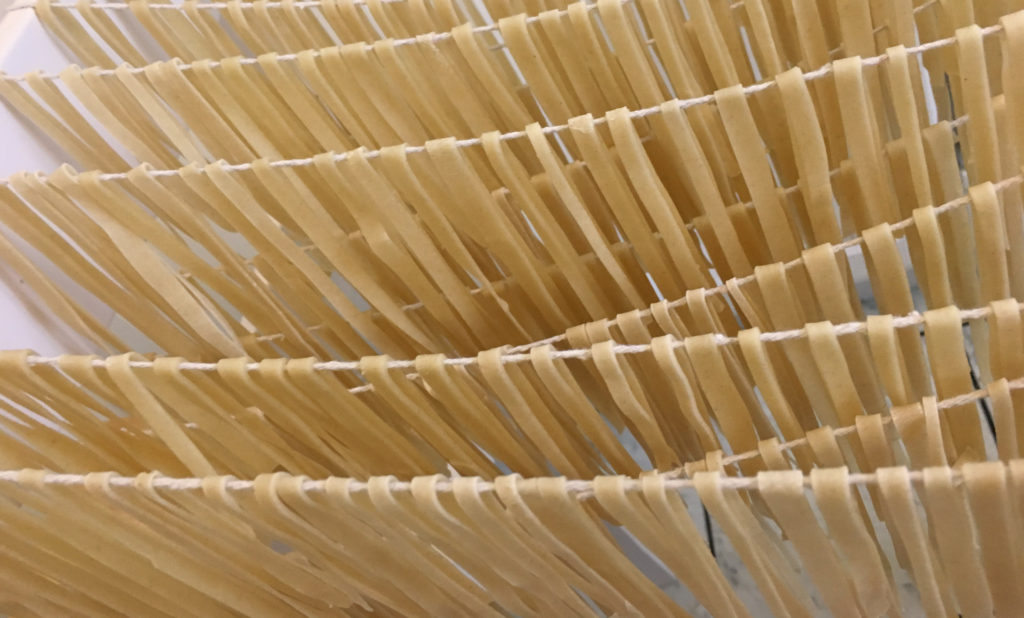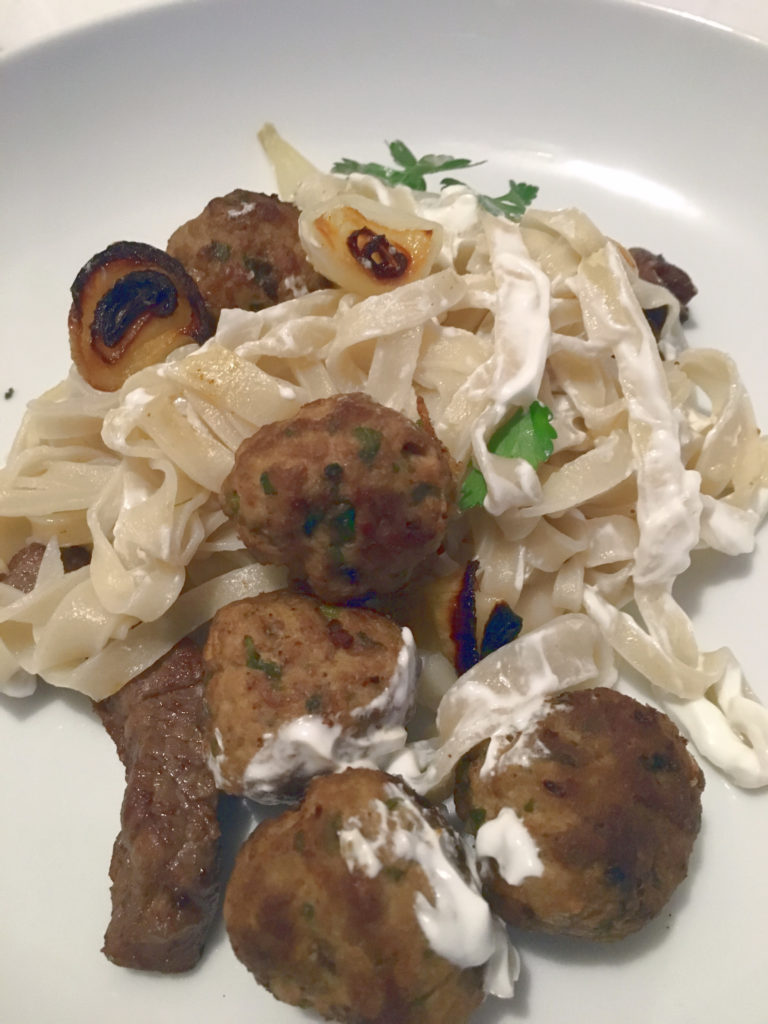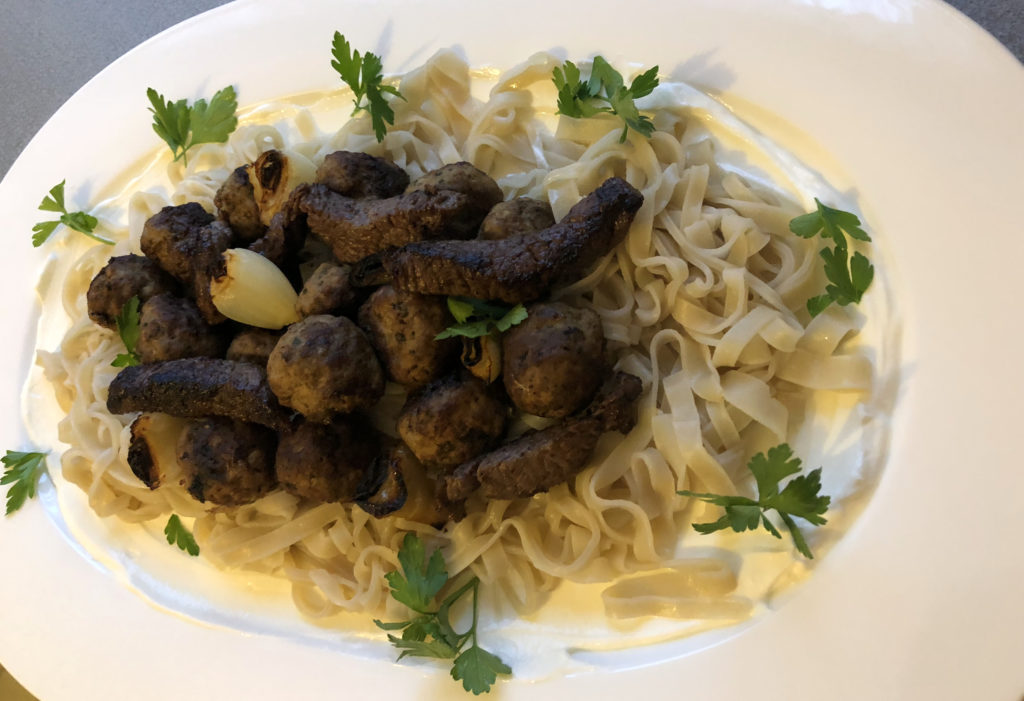This is a 13th-century variation of a dish that was very popular in the Muslim East and starts with meat (lamb) cut into strips. The recipe is of particular interest because it results in the creation of no fewer than three dishes. The first involves the meat, oil, ginger, salt, pepper and water. One third of the dish is then taken and placed in another pot with vinegar. Half of this is transferred to another pan and sprinkled with chopped rue. Finally, add asafoetida to the remaining half and crack five eggs over it.

